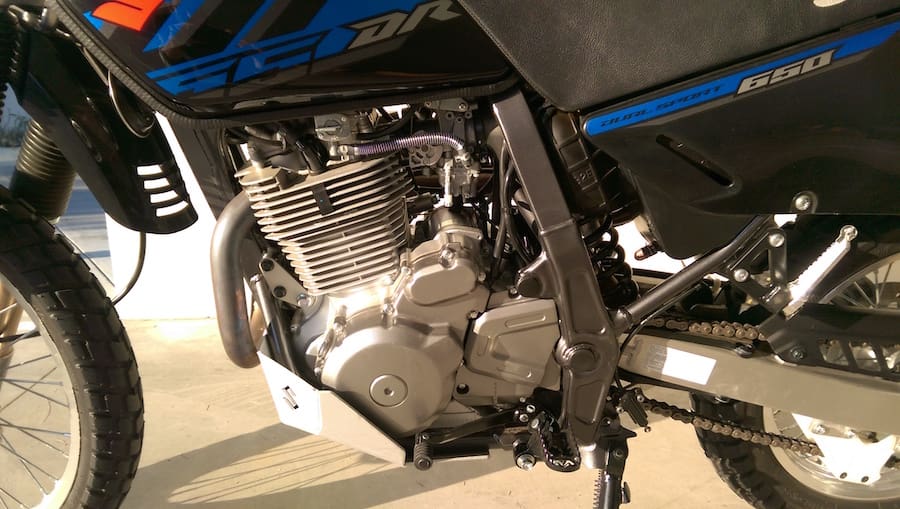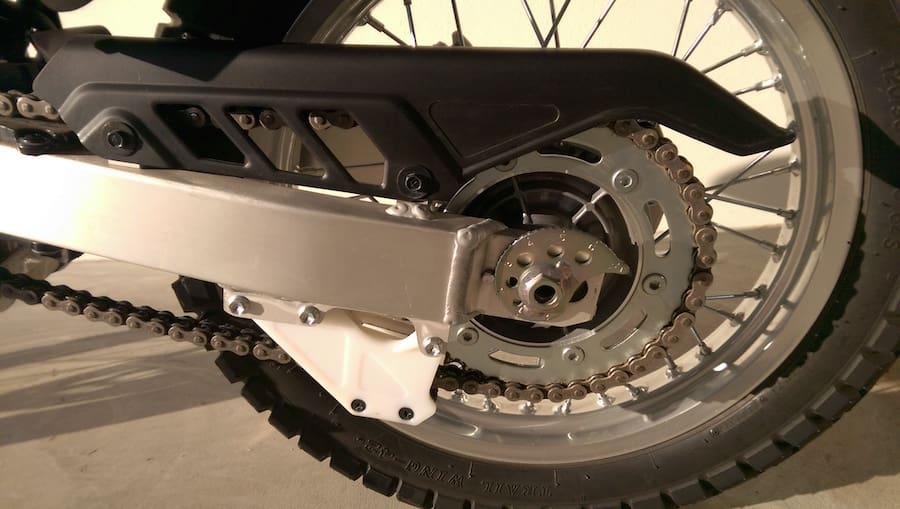Unlikely as it seems, the Suzuki DR650 is one of those bikes that makes grown men and women go weak at the knees. Since the first model appeared almost 30 years ago, and the first SE variant 10 years later, they have become known and loved around the world.
I’ve seen even the most hardened adventurers get a misty glow in their eyes as they start talking about their next great journey and how the DR could take them there. ‘Bulletproof’, ‘easy to find spares’, ‘go anywhere’ … these descriptions crop up again and again. By this point the speaker usually has a faraway look and is staring at the horizon, returning only to reality to reflect on the very attainable price. Suddenly it seems like that dream adventure is within your grasp.
Let’s say, however, that you’re not an experienced globe-trotter, but a complete novice in the world of off-road and adventure riding. Is this really the bike you want to be on while you build up the skills that will take you around the country, or even the state?
As preparation for the big ride in this issue, I made a booking with Stay Upright to do a one-day Adventure Bike course on the DR650SE (see breakout). This was my very first experience riding off road.
Initial impressions of the bike were positive. Suzuki has updated the graphics, and our test bike also had a bashplate, handguards and carry rack added. The OE Bridgestone Trail Wings tyres looked ready for off-road adventure too.
There are also plenty of signs you are on an old-school bike. You’ll need to turn that fuel tap on, and use a choke on this carburetted single. There was a weird thing on the rear axle that Youngy explained was a snail-cam chain adjuster. And the dash looks very 20th century – analogue speedo with trip meter and odo, plus just three lights: neutral, indicator and headlight. A fuel light would be useful, though real adventurers will argue that if you’re out in remote areas, a fuel light ain’t gonna save you.
Riding to the Stay Upright course through Melbourne traffic, the high perch offered a great view over traffic, while the relatively light 170kg wet weight made it easy to handle at stops. The 644cc donk had enough push for city duties too, even on the highway. And the 21-inch front wheel wasn’t the radical departure from the 17-inch front I was expecting – the DR handled intuitively and was easy to manoeuvre.
But the real fun began when I arrived at the training paddock at Hoppers Crossing. There it was mainly about getting around in first gear and at low speed – the terrain was the big challenge. Also taking the course was Peter on a Tiger 800 and Quill on a KTM EXC 450, and I definitely felt I had the most manageable bike, both in terms of the engine and weight. The DR650 tractored right up the slopes, and while it chugged a bit when the revs dropped, it rarely stalled. Power came on strong enough, but predictably. The DR is smooth, not like silk or satin, but like good porridge.
While the seat is something of a plank, the ’pegs are great for standing up. The ground clearance and the long-travel suspension – 260mm front and back – was a massive help for a novice trying to clear his first log (okay, large branch).
Novice riders in the market for a machine that can get them to work or uni during the week, and into the countryside on weekends, will no doubt also be eyeing the slightly smaller and more dirt-biased WR and CRF offerings from Yamaha and Honda. But there’s a reason the DR is Australia’s top-selling LAMS bike in the Adventure Touring segment – it’s size makes it a better proposition for longer trips, and it can still do the business off road. And if you plan on adventuring for a few years to come, there would be no need to trade this bike in for anything else once you’ve moved to a full licence. Hop on, and it won’t be long until – like thousands of adventurers before you – you’ll be dreaming about the horizon.
Pro
- Solid
- Forgiving
- Inspiring!
Cons
- No fuel gauge or light
- Hard seat
By Mark Vender Photos Steve Martin













